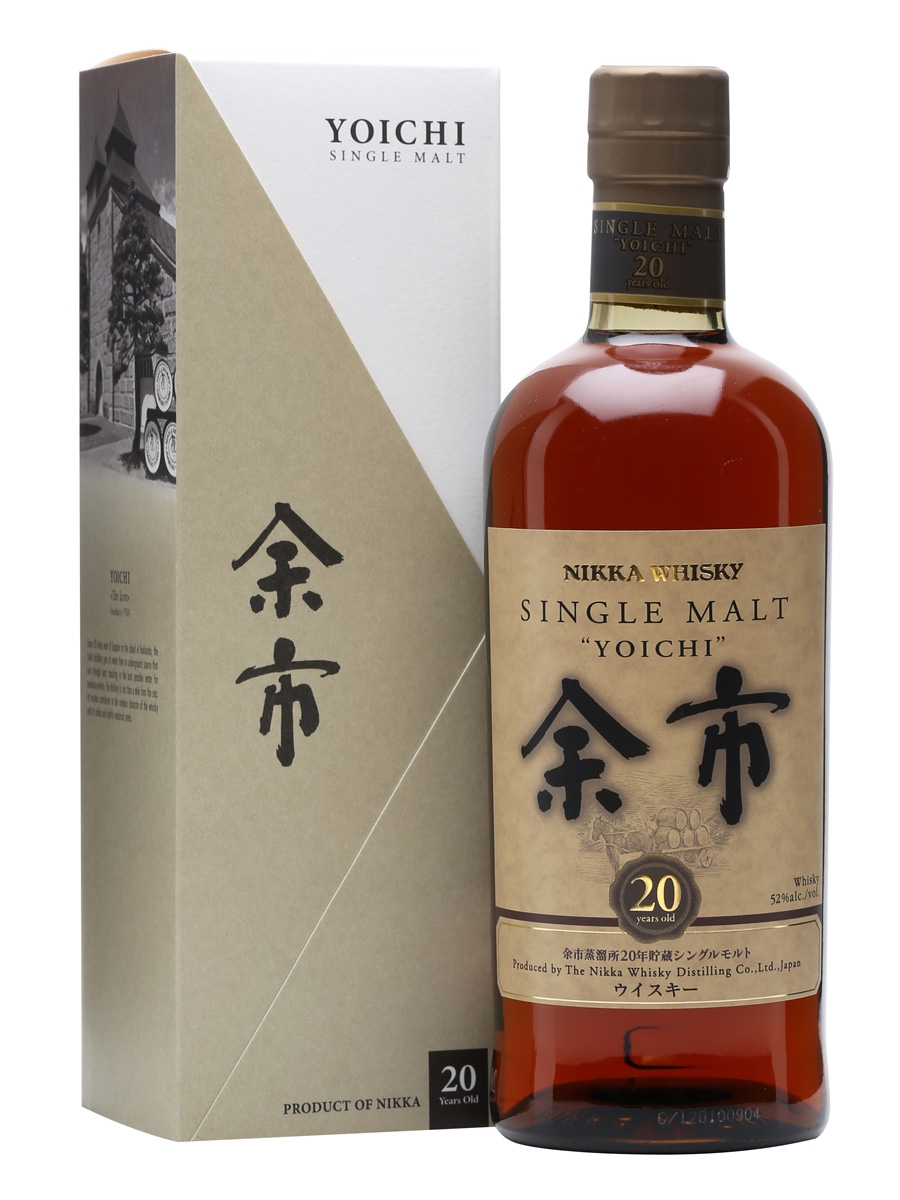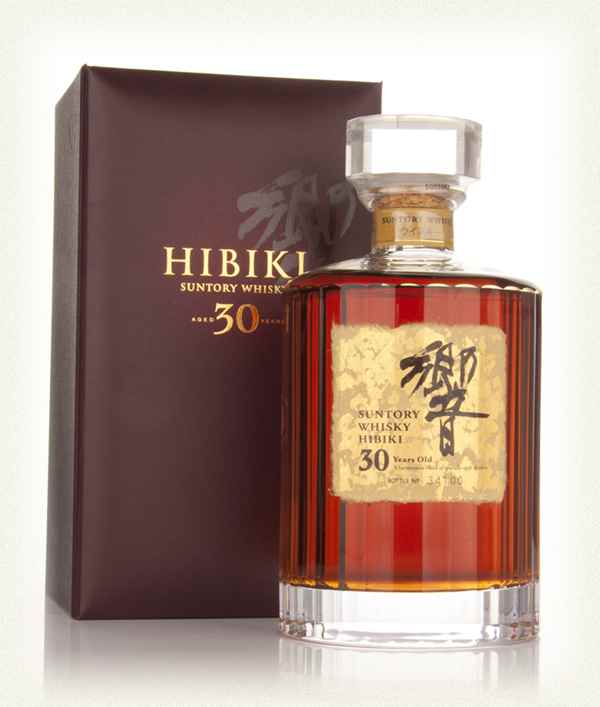Why You Should Drink More Japanese Whisky
The two whiskies above took home major awards in 2008. How did Japan make its mark in an industry dominated by Scotland, Ireland, and the United States? Read on to find out more.
As you may know, I run a bunch of spirits programs at the store (which is in the running for Best Wine & Spirits Shop, by the way!) here in Connecticut. Along the way, I have had returning students provide feedback on what they would like to see in future classes. A frequent (and somewhat surprising) request was that I hold a course discussing Japanese whisky.
I said to myself, "Self...why not? We should have a nice response if we are getting that many folks looking to learn more about what Japan has to offer the whisky drinker." When I saw that two dozen fans of the topic signed up for the class, that just confirmed something that I have been thinking about for quite some time: Japanese whisky is an alcohol category that is real and deserves your attention.
The most amazing part of Japanese whisky is that it has only been commercially viable for less than 100 years. It all started with two men who laid the foundation for success: Shinjiro Torii and Masataka Taketsuru. Torii started an import company that focused on Spanish wines. He found that it didn't go over well, so he turned his attention to finding western-style liquors that would suit the local palate. In 1918, Torii sent Taketsuru to the University of Glasgow in Scotland to learn all he could about how Scotch whisky was made.
Yoichi was not built to be a Scotch whisky copycat, but rather in reverence to Scotland.
During Taketsuru's time there as a student, he also apprenticed at the Longmorn and Hazelburn distilleries. He returned to the Osaka area, married to a Scottish woman, ready to partner with Torii's company (that later became Suntory) to build the Yamazaki distillery in 1923. When the first product launched in 1929, it wasn't the successful product they had hoped it would be, leading to some philosophical differences and eventual split. In 1934, Taketsuru ventured off on his own to the northern island of Hokkaido, where he felt the environment most resembled Scotland's climate and could therefore emulate Scotch whisky in Japan. Taketsuru built Yoichi (which still stands today), which is part of the Nikka Whisky group that includes the Miyagikyo distillery. Taketsuru's goal to recreate Scotch whisky came true as today, Nikka makes a range of malt, grain, and blended whiskies that have won many awards, including best single malt whisky (Yoichi 20 Year) of 2008 in the World Whisky Awards.
Despite butting heads when it came to philosophy, these two provided the foundation for the good fortune Japanese whisky is starting to enjoy today. Image credit: Whizzky
Meanwhile, Suntory added Hakushu distillery to Yamazaki to increase its capabilities. Torii wanted to make whisky that would appeal to the Japanese palate with mild, delicate qualities and clarity of flavors (which you will certainly find in the Hibiki range). After Torii passed away, the company diversified into non-alcoholic beverages and holistic supplements and by 2014 purchased Beam Global (Jim Beam, and other brands) for US$16B. Suntory's Hibiki 30 Year blended whisky won best blended whisky of 2008 in the World Whisky Awards.
So 2008 was a major turning point for a country who endured World War II and subsequent recovery, high alcohol taxes on domestic production, the availability of cheap imported whisky (that cost less than what was being produced domestically), and an economic downturn in the 1990s. While Torii and Taketsuru took different paths, each stuck to his guns philosophically and each made his mark on the whisky industry that led to the influx of Japanese products we are seeing on shelves today.
Aside from the two major players of Suntory and Nikka, who are juggernauts producing many different styles and labels, there are also smaller distilleries, most of which were founded as sake breweries and shochu producers, making much smaller quantities of high quality whisky. These once part-time distilleries are seeing so much demand for their products, they are slowly evolving into full time, serious whisky players. This brings me to what we tasted in our class this past Thursday night. We chose six whiskies from the independent/small distillers to show students where Japanese whisky is today. Additionally, with demand through the roof for Japanese whisky, prices of the well-known larger brands from Suntory and Nikka are skyrocketing. I wanted to offer a lower barrier to entry for someone to get started in exploring Japanese whisky.
With the help of my friend and outstanding sales rep from Skurnik Wines & Spirits, we were able to put together an awesome lineup that generated a lot of discussion and enjoyment. You should be able to find many of the following products in your market, but as always if you don't...ask your friendly retailer if he or she can order one for you. Find a Japanese whisky that fits your budget and give it a shot...we have so many examples available that are worth seeking out.
Mars Shinshu Iwai Blue Label ($36): This corn-based whisky shows some similarities to Bourbon with a mild sweetness. The whisky is aged for anywhere from three to eight years in different types of barrels to create an easy-drinking whisky that is a great base ingredient in cocktails. Pear, peach, and vanilla flavors with a subtle caramel sweetness on the finish.
Mars Shinshu Iwai "Tradition" ($54): Same distillery as the Iwai Blue Label, but now malted barley based and aged in a mix of Sherry, Bourbon, and "Wine" cask. Flavors and aromas are more pronounced with cherry fruit, honey, toffee, ginger, and a gentle smokiness. Spicy on the finish.
Matsui Shuzo Kurayoshi Pure Malt ($60): This is 100% malted barley, with whisky ages ranging from three to eighteen years in Bourbon casks. Soft texture with a fragrant nose of raisins, roasted nuts, and vanilla. This whisky is also available in a Sherry cask version.
Ohishi Brandy Cask ($66): Ohishi was traditionally a sake and shochu producer being located in the southern island of Kyushu, so their whiskies use rice as the base material. Distilled in stainless steel (rather than copper) pots, this leads to a silky-textured whisky that has spent three to 25 years in Cognac barrels. Bottled unfiltered, flavors of dried pineapples, fresh exotic fruits, and vanilla are complemented by delicate floral notes.
Ohishi Sherry Cask ($66): Sherry wine definitely comes through on this whisky, so you fans of Macallan and Dalmore should be looking this way if you want to try something different. Dried figs, golden raisins, hazelnuts, and almonds come through with a tropical fruitiness that makes this incredibly enjoyable.
Eigashima/White Oak Distillery Akashi Ume Whisky ($37): This is a unique beverage that is almost like a ready-to-drink cocktail. Malt whisky is infused with green sour Japanese plums (a.k.a. "ume") and rock sugar, then married in barrel for six to twelve months. This can easily be poured over ice or mixed with club soda to make a refreshing drink. Additionally, this could be an interesting component of a Japanese take on an Old Fashioned or Whisky Sour.






